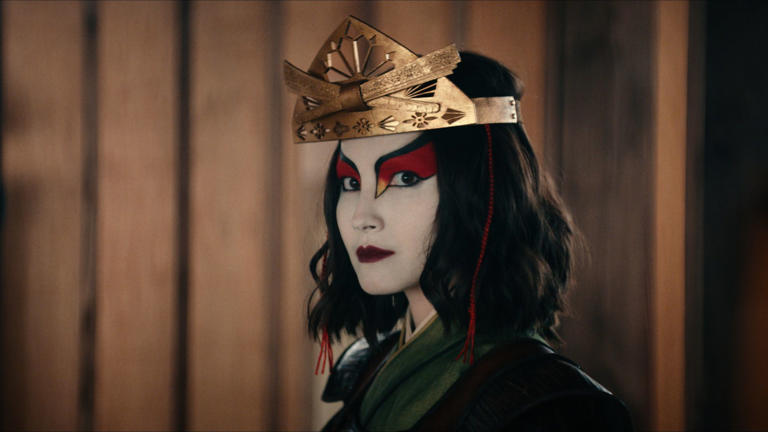In the recent rollout of Netflix’s live-action adaptation of “Avatar: The Last Airbender,” fans found themselves embroiled in a discourse dissecting the portrayal of key characters, particularly Sokka and Suki. This scrutiny isn’t new to the ATLA fandom, having previously weathered a less-than-ideal live-action adaptation. However, the remarks made by Kiawentiio, the actor portraying Katara, regarding the removal of Sokka’s perceived sexism, sparked controversy among viewers.
Diving into the adaptation’s rendition of the Kyoshi Warriors episode, it becomes apparent that the live-action series takes a different approach, notably altering the dynamics between Sokka and Suki. While both iterations start similarly, with Aang, Katara, and Sokka encountering the Kyoshi Warriors, the live-action adaptation deviates from the source material, particularly in its portrayal of Suki.
In the original series, Suki’s introduction involves her capturing Sokka, who reacts incredulously to being subdued by a group of female warriors. This initial encounter sets the stage for a dynamic where Suki challenges Sokka’s chauvinism, engaging him in combat to prove her skills. However, in the live-action adaptation, Suki’s skepticism is downplayed, and the focus shifts towards bolstering Sokka’s character development. This shift not only diminishes Suki’s agency but also undermines the complexity of their relationship.
One of the critical aspects of the original series was its exploration of Sokka’s growth and eventual overcoming of his sexist beliefs. Through interactions with Suki and the Kyoshi Warriors, Sokka learns valuable lessons about equality and respect. However, in the live-action adaptation, this narrative arc is diluted, with Sokka’s sexism being downplayed rather than confronted. This decision not only strips away the depth of Sokka’s character but also does a disservice to the themes of the original series.
Furthermore, the adaptation’s treatment of Suki’s character is concerning. In the original series, Suki is depicted as a formidable warrior with agency and independence. However, in the live-action adaptation, her character is reduced to a mere love interest, with her storyline revolving around supporting Sokka’s development. This reduction of Suki’s character undermines the progressive themes of the original series and perpetuates outdated gender stereotypes.
The original Kyoshi Warriors episode effectively addressed issues of sexism and gender dynamics through nuanced storytelling. Sokka’s journey from ignorance to understanding was a central theme, highlighting the importance of challenging ingrained biases. However, in the live-action adaptation, this theme is sidelined in favor of a more simplistic narrative, devoid of the complexities that made the original series resonate with audiences.
It’s crucial to recognize that the issues addressed in the original series, such as sexism and gender inequality, remain relevant today. By glossing over these themes, the live-action adaptation fails to engage with the socio-cultural commentary that made the original series so impactful. Instead of confronting uncomfortable truths, the adaptation opts for a sanitized portrayal that ultimately falls short of its predecessor.
Moreover, the adaptation’s reluctance to depict moments of conflict or discomfort reflects a broader trend of risk-averse storytelling in mainstream media. By prioritizing audience relatability over narrative integrity, the adaptation sacrifices the depth and complexity of its characters, ultimately resulting in a less compelling viewing experience.
In conclusion, Netflix’s live-action adaptation of “Avatar: The Last Airbender” raises important questions about the portrayal of gender dynamics and character development. While the original series tackled these themes with nuance and sensitivity, the adaptation falls short in its attempt to replicate the same depth. By downplaying moments of conflict and glossing over complex character dynamics, the adaptation misses an opportunity to contribute meaningfully to the discourse surrounding gender equality and representation in media. As viewers continue to engage with the adaptation, it’s essential to critically examine its portrayal of key themes and consider the broader implications for storytelling and representation in popular culture.
